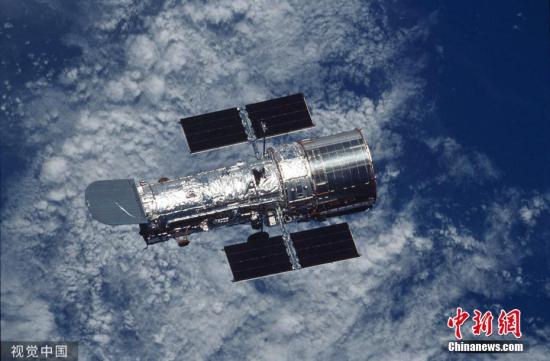China News Service, San Francisco, December 21. The National Aeronautics and Space Administration (NASA) said on the 21st local time that the launch date of the James Webb Space Telescope will be from December due to severe weather in the area where the French Guiana Kuru Space Center is located. The 24th is postponed to December 25 at the earliest.
The James Webb Space Telescope was originally scheduled to be launched from the Kuru Space Center in French Guiana at 7:20 on the 24th Eastern Time.
CNN reported that on the 21st, shortly after NASA announced that it had completed the pre-launch inspection, news of severe weather came.
NASA stated on its official website that on the 22nd, staff will reassess future weather conditions to confirm whether the launch date is set on the 25th.
NASA stated that the launch vehicle and the James Webb telescope are "in a stable and safe state in the assembly building."
Data map: Hubble Space Telescope.
Image source: Visual China
The James Webb Telescope is the most powerful and most expensive space telescope built.
The Associated Press reported that the James Webb telescope is "a hundred times more powerful" than the Hubble telescope.
It costs about 10 billion U.S. dollars, weighs 7 tons, and has a main mirror of 6.5 meters in diameter. It is composed of 18 huge hexagonal sub-mirrors, and the area of the sun visor is equivalent to the size of a tennis court.
Due to its huge size, the telescope will be launched into the air in a folded state.
After flying for a month, the telescope will reach an observation position about 1.6 million kilometers away from the earth, stay on the night surface of the earth, and orbit the sun synchronously with the earth.
Using remote control to smoothly deploy its components and accurately place them in place will bring great challenges to researchers.
After the James Webb telescope arrives at the designated location, the researchers still need 5 months to conduct various inspections on it.
The telescope will begin collecting data and the first images later in 2022, and will be responsible for observing the galaxies that first appeared after the formation of the universe and searching for signs of extraterrestrial life.
At a seminar held in 1989, the concept of the James Webb telescope was first mentioned, and it was conceived as the successor of the Hubble telescope.
Since 2004, scientists, technicians and engineers from 14 countries have worked together to build this telescope.
After its completion, the James Webb Telescope is scheduled to be launched in 2018, but its launch date has been delayed many times due to factors such as technology, budget, and the new crown epidemic.
(Finish)

